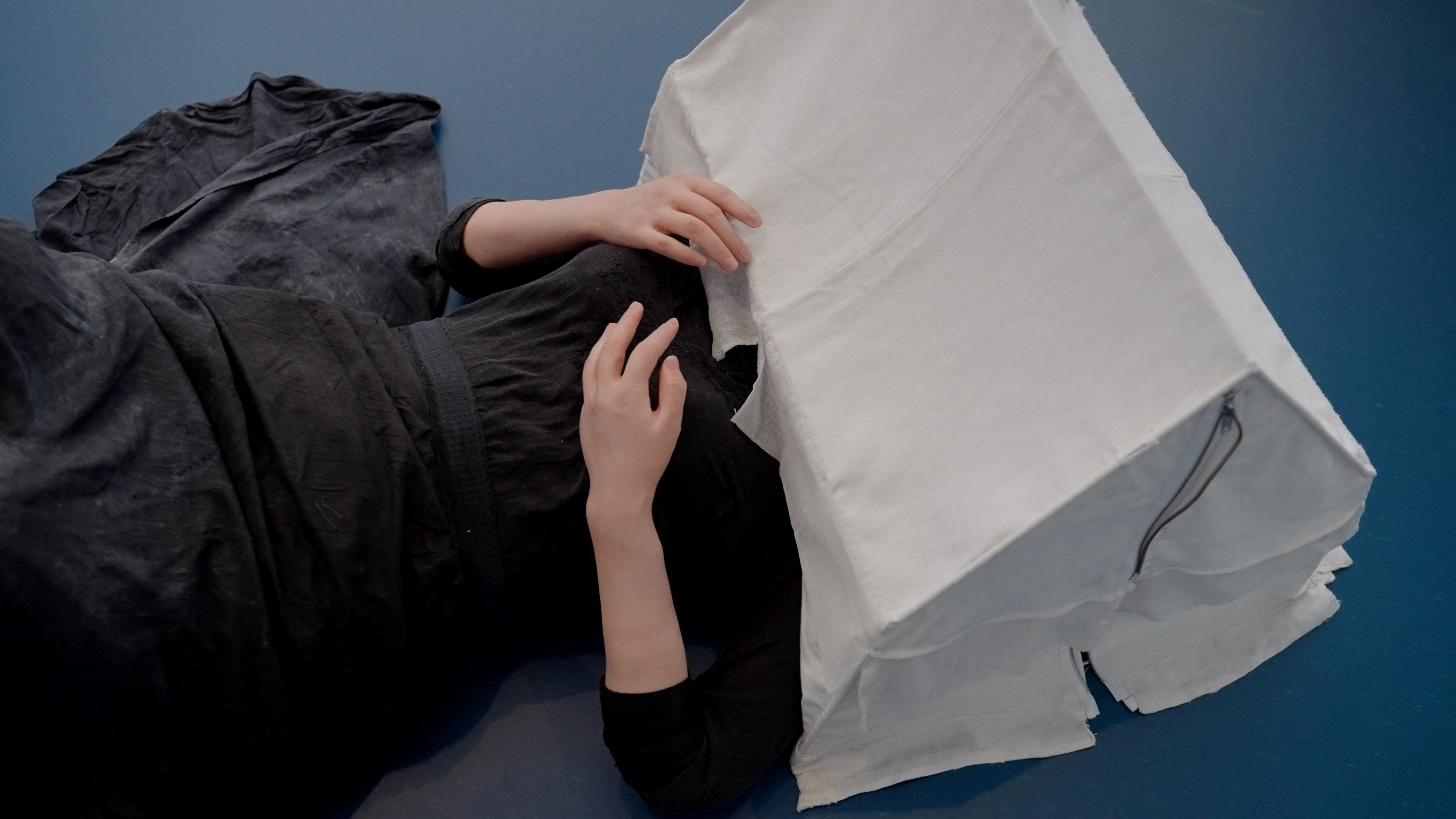Stina Opitz är en viktig konstnär i regionen. Hon arbetar med funna objekt, skulptur, installation och videokonst. Hennes skulpturer finns över hela Östergötland. Stina Opitz bildspråk är humoristiskt och absurt. Men hennes teman kretsar ofta kring allvarliga frågor om sårbarhet och kroppslighet.
Opitz skriver själv:
"En inbjudan till en utställning på konsthall Passagen med temat "Artist in residence" blev en av utgångspunkterna för mitt verk med samma namn. Jag har återkommit till temat gång på gång. Artist-in-residence-begreppet kan stå för ett slags stipendium då konstnären tillfälligt får bo på annan ort med ateljémöjlighet under en begränsad tid. Men naturligtvis kan titeln också syfta på bostadsfrågor överhuvudtaget. Alla ska ha någonstans att bo och alla bostäder är tillfälliga liksom hela tillvaron.
Den österrikiska psykoanalytikern Sigmund Freud menade att den som bygger ett hus i själva verket gjort ett självporträtt. Jag har byggt olika hus, kojor, torn och tält under mitt yrkesliv. Utmärkande för dem är att en människa inte fått plats i husen, bara en del av kroppen har rymts. Första gången gjorde jag en liten modell av ett runt rum. Det var fönster runtom hela konstruktionen och inuti rummet lade jag en av mina gamla klänningar som trängde sig ut genom fönstren och höll på att spränga bygget. Varför jag återkommit till detta tema vet jag inte. Kanske är det något slags skyddsbehov efter många flyttar under barndomsåren och tidiga vuxenlivet. Eller på att jag måst lämna ett par hem under bistra ekonomiska tider. Är det mitt ostrukturerade sätt att arbeta i kaotiska miljöer som ligger bakom, där objekt, skulpturer, material, skräp och bräckliga byggen gör att rummen snart blir överfulla? Otryggheten i konstnärskapet? Hoppet att kunna pressa in sig i en ateljé och få behålla den? Konsten att övervintra. Kan min klaustrofobi ligga bakom?
I "Artist in residence II" här på muséet har kvinnan fått ett litet tält att försöka passa in i. En fragil, snäv och tillfällig plats. Hon håller i tältet som skydd över huvudet och resten av kroppen ligger utanför. Hon kickar iväg en spark som ser ut att riktas uppåt. Hon kan vara på väg.
När jag får veta att Carl Fredrik Hill ska vara med på utställningen börjar jag nästan darra. Jag tänker på hans "kluvna jag" när jag jobbar med mina skulpturer med dubbla och multipla personligheter. Bland hans teckningar från sjukdomstiden, som är mina starkaste och mest älskade konstminnen, finns också det klaustrofobiska bildrummet där hans figurer knappast ryms. Ett litet hopp om att jag i det fallet kan spegla mig i honom."
Stina Opitz is an important artist in the region. She works with found objects, sculpture, installation and video art. Her sculptures can be found all over Östergötland. Stina Opitz's imagery is humorous and absurd. But her themes often revolve around serious issues of vulnerability and physicality.
Stina Opitz writes:
"An invitation to an exhibition at the art gallery Passagen with the theme "Artist in residence" became one of the starting points for my work of the same name. I have returned to the theme again and again. The concept of artist-in-residence can stand for a kind of scholarship where the artist temporarily lives in another place with studio facilities for a limited time. But of course the title can also refer to housing issues in general. Everyone should have somewhere to live and all housing is temporary, as is all of life.
The Austrian psychoanalyst Sigmund Freud said that anyone who builds a house has in fact made a self-portrait. I have built various houses, huts, towers and tents during my professional life. They are characterised by the fact that there is no room for a person in them, only a part of the body. The first time I made a small model of a round room. There were windows all around the structure and inside the room, I put one of my old dresses, which leaked out through the windows and almost blew up the building. I don't know why I returned to this theme. Maybe it's some kind of need for protection after many moves during childhood and early adulthood. Or because I had to leave a couple of homes during tough economic times. Is it my unstructured way of working in chaotic environments, where objects, sculptures, materials, rubbish and fragile structures mean that rooms soon become overcrowded? The insecurity of being an artist? The hope of being able to squeeze into a studio and keep it? The art of hibernation. Could my claustrophobia be behind it?
In "Artist in residence II" here at the museum, the woman has been given a small tent to try to fit into. A fragile, narrow and temporary space. She holds the tent to protect her head and the rest of her body is outside. She kicks away a spark that seems to direct upwards. She could be on her way.
When I find out that Carl Fredrik Hill is going to be in the exhibition, I almost start shaking. I think of his 'split self' when I work on my sculptures with dual and multiple personalities. Among his drawings from the time of his illness, which are my strongest and most beloved art memories, there is also the claustrophobic pictorial space where his figures hardly fit. A small hope that in this case I can reflect myself in him."

